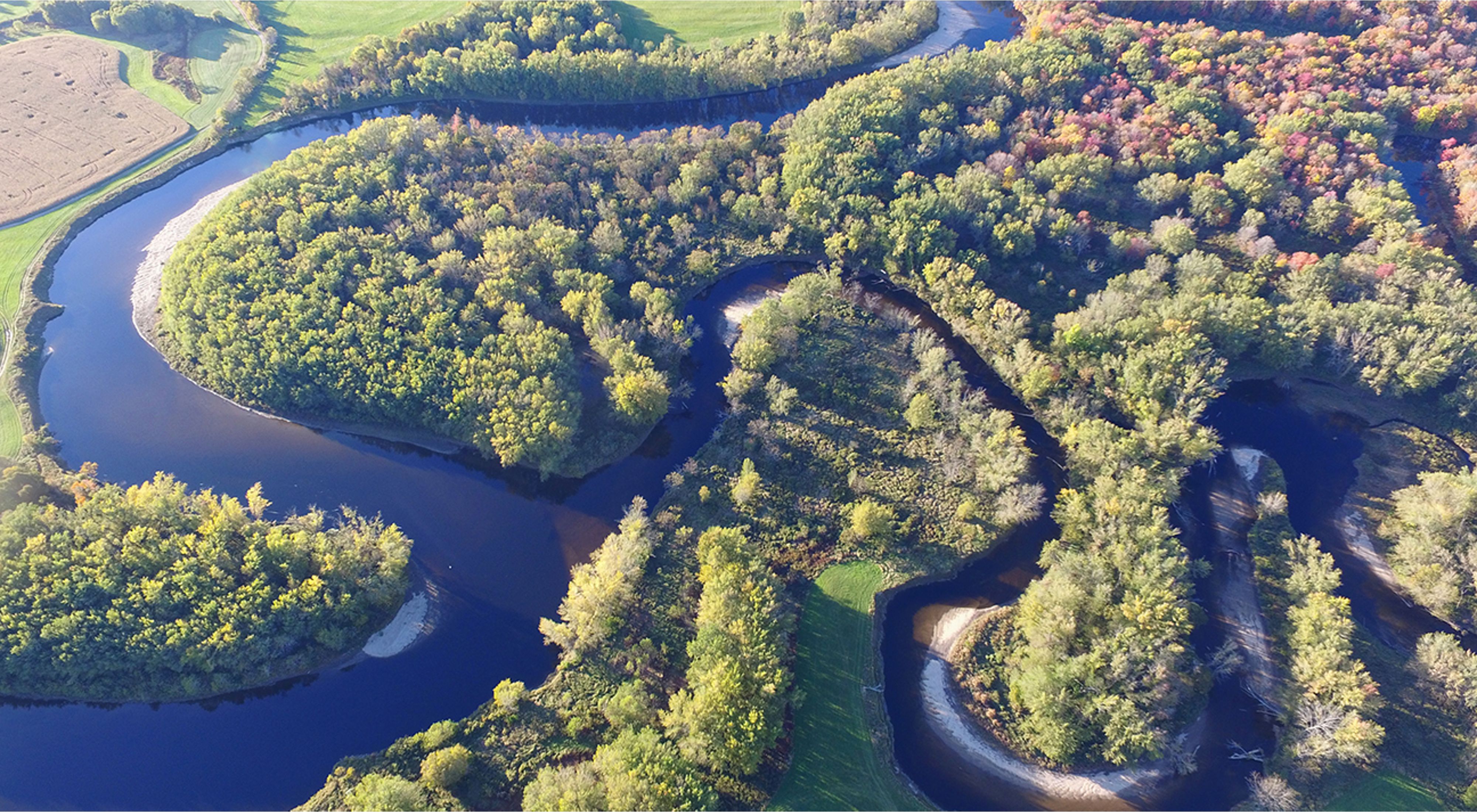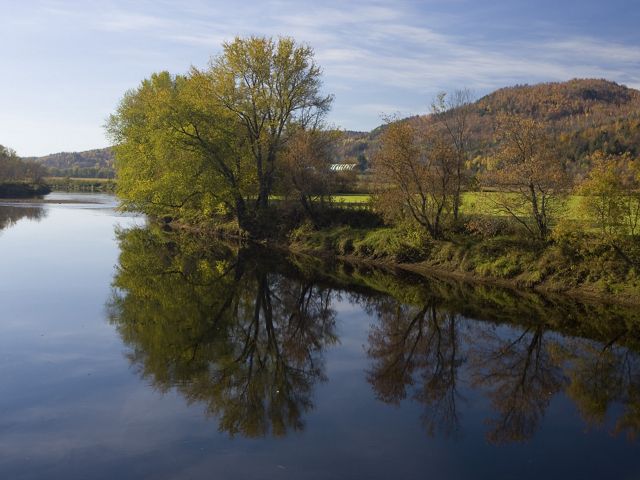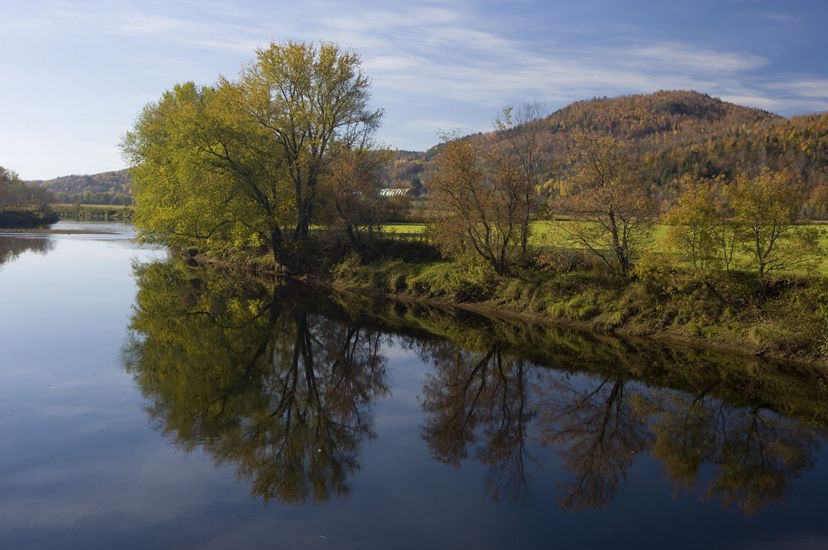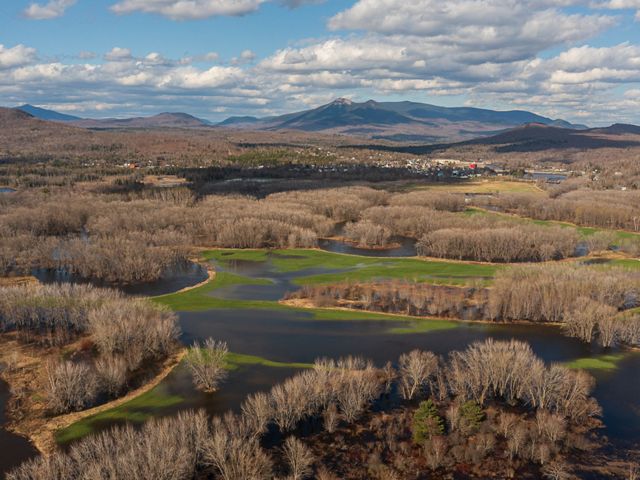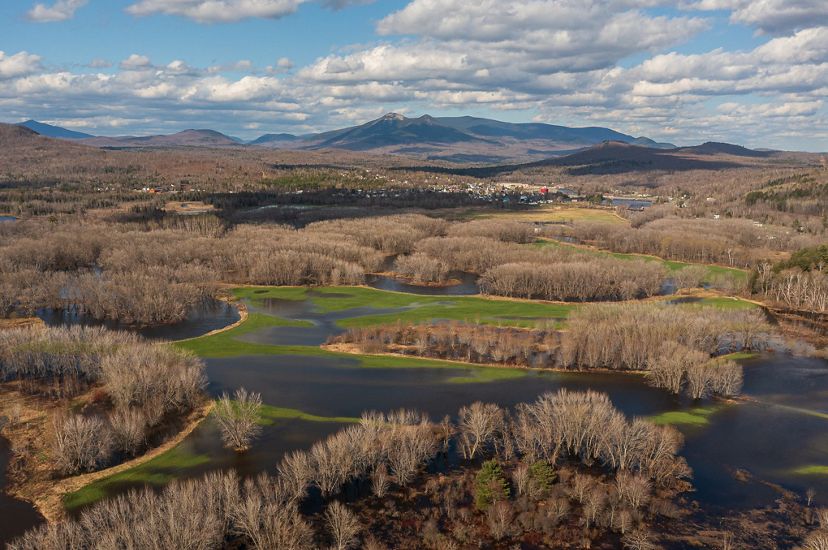Maidstone Bends Preserve Expands with 870-Acre Addition
Conservation Project in Northumberland Supports Clean Drinking Water, Conserves Important Wildlife Habitat and Provides Recreational Opportunities.
Media Contacts
-
Jim O'Brien
Deputy State Director
The Nature Conservancy in New Hampshire
Phone: 603-856-5378
Email: jim_obrien@tnc.org -
Jim Oehler
Wildlife Habitat Program Supervisor
New Hampshire Fish and Game Department
Phone: 603-271-0453
Email: james.d.oehler@wildlife.nh.gov
The Nature Conservancy in New Hampshire (TNC) today announced the permanent protection of 870 acres along the Upper Connecticut River in Northumberland and Groveton. The parcel contains a mix of farmland, woods, wetlands, and expansive floodplains—areas along the river that flood each spring, filtering water and providing irreplaceable wildlife habitat. The New Hampshire Fish and Game Department, a key partner in the success of the project, will hold a conservation easement on a 358-acre portion of the property. The purchase expands The Nature Conservancy’s Maidstone Bends Preserve, now encompassing 1,250 acres.
"The importance of this acquisition for wildlife and habitat conservation is undeniable. Its combination of farmland, wetlands, woodlands and future floodplain forest will support a diverse array of wildlife—from waterfowl to wood turtles and bears to bank swallows,” says Jim Oehler, wildlife habitat program supervisor for the New Hampshire Fish and Game Department. “And a similarly diverse array of outdoors men and women will reap the benefits of this conservation effort whether their interest is putting food on the family table, watching and learning about animal behavior, or getting that perfect wildlife snapshot."
“The scope and scale of this project is simply incredible,” commented Paula Bellemore, executive director of the Land and Community Heritage Investment Program (LCHIP). “Together, TNC and NHFG are protecting critical habitat along the iconic Connecticut River, conserving rich agricultural lands unparalleled north of the White Mountains, and restoring 250 acres of floodplain forest and riparian habitat - the largest such restoration project in NH history. Add to that secured public access for recreation and protection of public drinking water supplies and this project hits every one of LCHIP’s conservation priorities.”
Nearly 60% of the newly conserved property falls within a drinking water protection area and safeguards an important public drinking water source for Northumberland. The New Hampshire Drinking Water and Groundwater Trust provided a Department of Environmental Services Sourcewater Protection Grant to The Nature Conservancy to support the protection outcome and also provided an additional grant to the Town of Northumberland/Village of Groveton to support the wellhead protection area adjacent to the preserve.
“The conservation benefits alone are exciting,” says Elizabeth Bergquist, associate director for land conservation with The Nature Conservancy in New Hampshire. “But there is even more to this project, including protecting water quality by safeguarding the local drinking water recharge area, conserving important agricultural lands and soils, and providing recreation access for the community.”
Since 2009, The Nature Conservancy in New Hampshire and Vermont have been working to protect important floodplain habitat and agricultural lands within the Maidstone Bends area along the Connecticut River. Because of its extensive river frontage, the protection of these acres is vital to ensuring a healthy Connecticut River as it meanders downstream to the Long Island Sound and Atlantic Ocean.
In addition to providing a federal Wildlife Restoration Grant to support the acquisition, the New Hampshire Fish and Game Department holds a conservation easement on the property and its Wildlife Habitat Program will be collaborating with TNC on future habitat management. Financial support was also provided by New Hampshire’s Land and Community Heritage Investment Program (LCHIP), the Open Space Institute's (OSI) Appalachian Landscapes Protection Fund, the Upper Connecticut River Mitigation and Enhancement Fund of the New Hampshire Charitable Foundation, The New Hampshire Drinking Water and Groundwater Trust and many generous private donors.
OSI’s Appalachian Landscapes Protection Fund is capitalized with major support by the Doris Duke Foundation, and additional funding from other private foundations.
High-resolution images and maps of the preserve are available upon request.
To learn more about the Maidstone Bends Preserve, visit nature.org/maidstonebends.
****
The Nature Conservancy works in New Hampshire and around the world to conserve the lands and waters on which all life depends. Guided by science and using a collaborative approach that is grounded in the needs of our state and local communities, we create innovative, on-the-ground solutions to our world’s toughest challenges so that nature and people can thrive together. In New Hampshire, the Conservancy has helped protect more than 290,000 acres of forests, fields and natural areas, along with 680 miles of coastal shoreline and river frontage. To learn more, visit www.nature.org/newhampshire or follow @tncnewhampshire on Instagram, TNCNH on Facebook and @Nature_NH on Twitter.
Because native wildlife and their habitats are vital to the health of NH’s landscape and character NH Fish & Game’s Wildlife Habitat Program conserves and improves habitats for the state’s wildlife on both public and privately-owned lands. We also ensure the public has access to those lands so they have a place to enjoy wildlife. To learn more, search #nhhabitathappenings on social media.
The Nature Conservancy is a global conservation organization dedicated to conserving the lands and waters on which all life depends. Guided by science, we create innovative, on-the-ground solutions to our world’s toughest challenges so that nature and people can thrive together. We are tackling climate change, conserving lands, waters and oceans at an unprecedented scale, providing food and water sustainably and helping make cities more sustainable. The Nature Conservancy is working to make a lasting difference around the world in 77 countries and territories (41 by direct conservation impact and 36 through partners) through a collaborative approach that engages local communities, governments, the private sector, and other partners. To learn more, visit nature.org or follow @nature_press on X.
